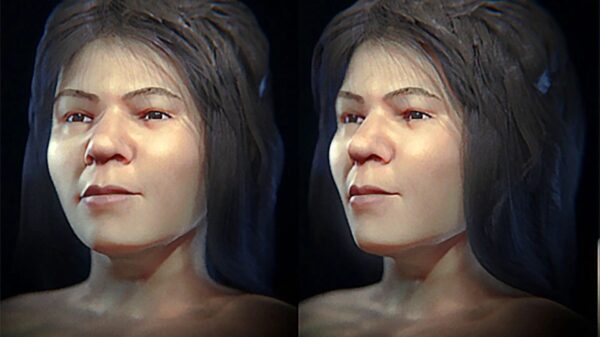A team led by the University of Newcastle, UK, used coprolite analysis – fossilized droppings – to identify human biomarkers in samples obtained from one of the most famous pre-Clovis sites in North America; Paisley Caves, Oregon (USA).

For most of the 20th century, the earliest inhabitants of the Americas were thought to belong to a single group known as “Clovis,” which crossed the Bering Strait and left distinctive stone tools in the archaeological record. And while it is now widely accepted that there were various groups present on the continent before, the dating of these “pre-Clovis” sites had been complicated since stone tools are often not found along with material that can be dated by radiocarbon.
In the case of the Paisley Caves, previous radiocarbon dating of the coprolites found showed that people lived there 12,400 years before the present and used stone tools that were very different from the Clovis culture. However, the DNA data was controversial and debatable, as the scientists did not have a good understanding of how well they were preserved and how they moved within sediments carried by water into the caves.
The new analyzes
Since humans and animals produce different types of lipids (fats like cholesterol in the gut), the research team analyzed traces of this material to identify whether they came from humans, dogs, or other animals.
Dr. Lisa-Marie Shillito of Newcastle University said in a statement: “The question of when and how people first settled in the Americas has been a subject of intense debate. By using a different approach, we have been able to demonstrate that there were pre-Clovis populations present in the Great Basin area, solving this debate once and for all. ”

A member of the research team working in the Paisley Caves, Oregon, USA Credit: Dr John Blong, University of Newcastle
Biomarkers in one of the samples revealed that a mixture of lipids and DNA was present in dogs and humans, suggesting that the dogs were consuming human feces. “We know that dogs do this today, and the fact that we have dogs doing this in Paisley is really strong evidence that they were domesticated and lived alongside people,” added Shillito. This, and the fact that the coprolites were found along with well-preserved material that was used to make baskets, is helping researchers better understand these early settlers and their way of life.
Until now, research has focused a lot on answering when and how people arrived on the continent. As a consequence, the nature of early occupation has received little attention, in terms of understanding the relationship between these early American populations and their environment, “explained the expert.

Paisley Caves
“We want to know more about these people. This was a time when the environment was very different and changing rapidly. We want to know how they adapted to these changes, what they ate and how this evolved over time, “he concluded.
This investigation is part of a larger project funded by the Natural Environment Research Council (NERC).
Source: Newcastle University


































